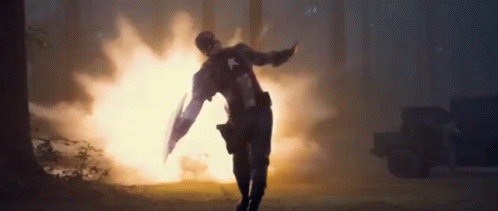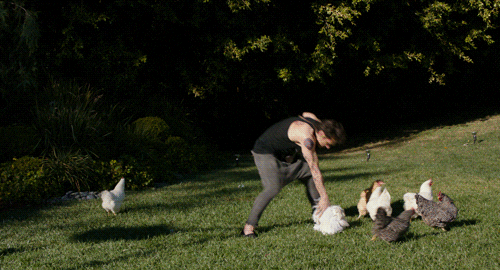Brychanus
* Ace Member *
I do understand why it is hard to 'see' the difference, but the feeling is absolutely night and day from my perspective. Squishing the bug does feel faster, and I think that is why people get a bit stuck on the concept. It also feels powerful, because it is forceful. But in reality, it just cannot really match the power of falling with gravity itself.
I don't know if you have ever skate/snowboarded and learned how to 'pump' your legs to accelerate on sloping terrain, but this seems like a relevant feeling to me. If you have done this, you know you don't simply extend your legs as fast as you can, its slower, and you have to set up the feeling of falling with gravity to really get the power.
Agree w/ everything RB said there. I'm afraid I should have left it at that, but I'll try one more time to help people with this issue. It may be a fool's errand, but I wouldn't be the first instructor who started as a fool.
There's probably stuff getting lost in translation especially when teaching vs doing.
I agree with this and IMO there are many reasons it is hard to see and feel. Kinetically when you start moving faster it can get blurry, even perceptually to the player doing it. I will even say that I've found trying to optimize the "better" shift much harder than the spin-shifting squish because it's much more about getting a clean leverage chain than it is rapidly rotating the body, so I totally get the temptation.
I have no way to substantiate this without real data, but I think sometimes what happens is that people sometimes start out squishing the bug and get an "aha!" because it can get your weight moving fairly quickly. Over time for some people, as their form develops their legs and posture kinda restabilize and the squish the bug sometimes goes away and they might not even realize it. I also think there are intermediate "quasi-squishers" out there. Legs and hips fascinate me because they have so many options to move.
The fact is, like RB is saying, squishing seems like a quick way to shift weight. But really stop to think about how, why, and where you want a swing to be "quick."
Aside from potential injury implications, the trouble with squishing the bug in terms of efficient mechanics is that you are missing out on some leverage through the legs and hips, and you are leaving more of your body mass behind in the chain (if you think about optimizing your m*v equation). McBeth's weight shift literally gets more of his mAss leading the swing than bug squishers. Squishers kind of neutralize part of the mass in favor of a forced faster rotation - but ideally I think you'd want as much mass as possible leading before you add velocity. I'm a big guy and even with other mechanics problems, there's a tremendous efficiency difference between the two.
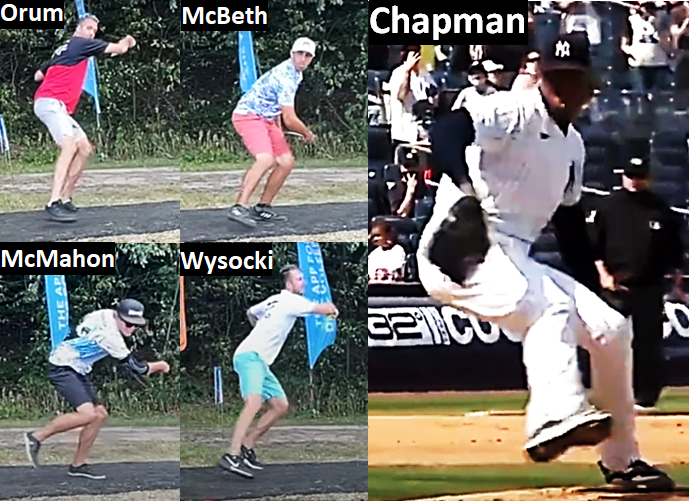
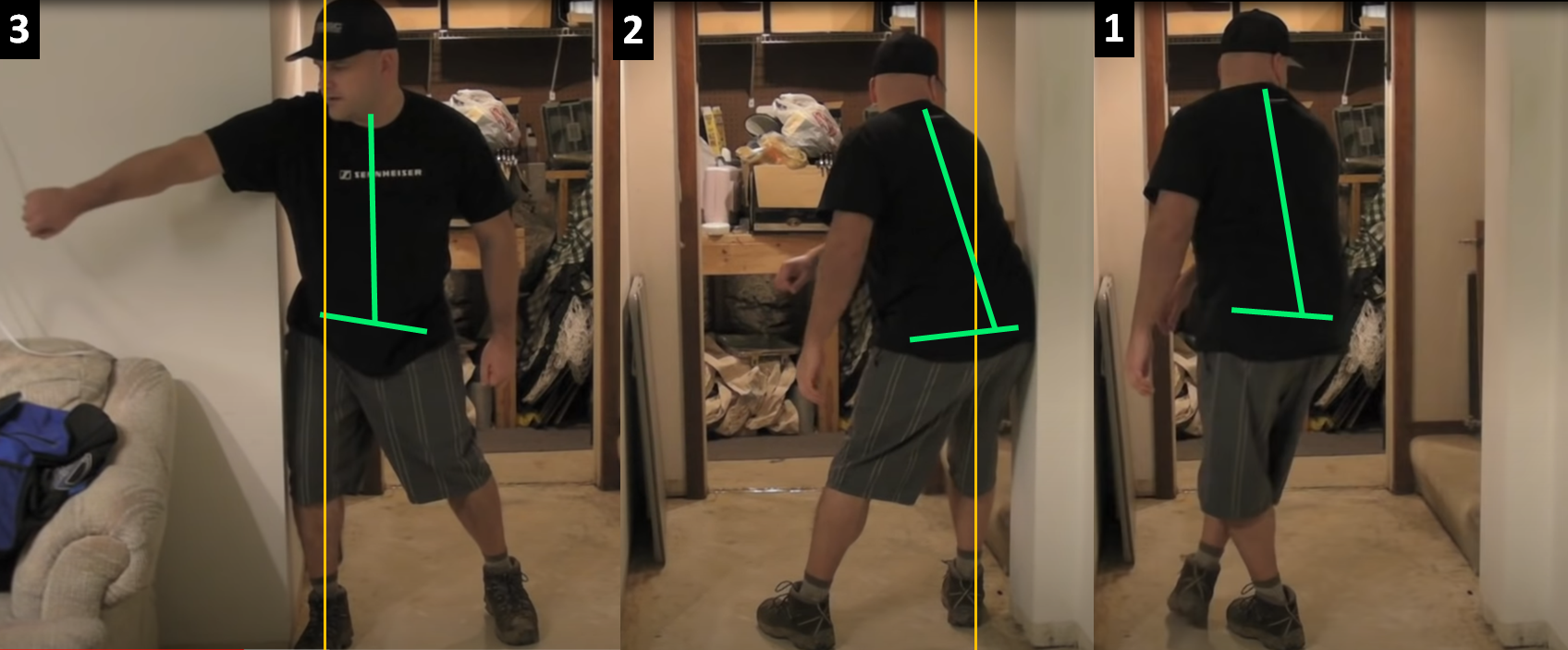
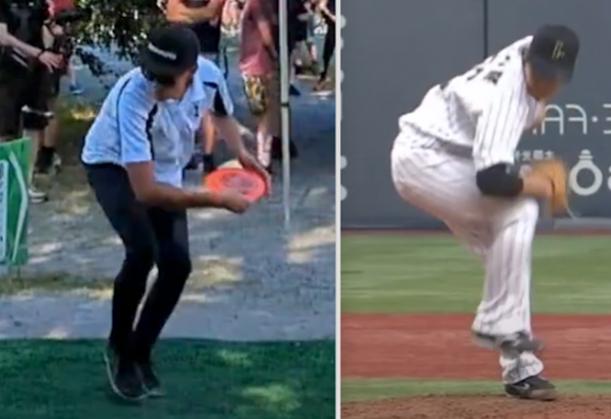
People who really do squish the bug when they throw likely tend to spray more (also speculating from anecdotal observation), probably because their feet aren't grounded quite as well when they plant. This became very noticeable to me when I started throwing heavier things.
I don't think it's a coincidence that very athletic, quick, and long-levered people can get away with some form of squishing the bug and get decent distance results. However, it's interesting to me that you have the three "longest" looking, athletically talented new FPO players all learning or teaching some version of this, and you have diminutive prime Paige Pierce decidedly not bug squishing and absolutely crushing discs. All of the new FPO players teaching it seem to have been influenced by Slingshot or similar sources. In Ella's recent post, she on the one hand taught a version of squishing the bug and pushing off the rear leg, then transitioned to a completely different motion when she actually threw that wasn't quite either of those actions. Notice various other differences in the drill mechanics some players teach from what they do when they swing. Speculating, I don't think we've seen anywhere close to the FPO distance ceiling because if you took Ella or Holyn or Caroline and gave them GG or McBeth or McMahon's balance and shift, I wonder what would happen. On tour, there is a "natural selection" process for forms especially in the MPO division that clearly favors ever-increasing distance yet maintains a premium on consistency in all phases of the game. In FPO those pressures probably differ due to course design and current field strength. I always wonder how this competition and selection pressure has caused mechanics at the top level to evolve in MPO vs FPO. I am otherwise consciously sidestepping other issues that might differ between current top FPO and MPO players and would say that it is worth talking about that too, including potential meaningful differences across different body types.
Also, notice that nothing I said here rebutted anything about the idea that the drive leg is not a fundamental, essential part of throwing well and throwing far. I just encourage skepticism about squishing the bug, and that no one should just take my word for it.
I can tell nothing from any of those pictures other than 6-time really has a huge stride forward compared to everybody. :|
I am happy to attempt to answer any specific questions if I can.
In general, compare the postures through the pelvic, orientation of the knees, location of the pressure of the feet against the ground, and sequence of the leg action when watching throws in real time. It took me months to understand. I still work on it myself.
I unfortunately can't show it all in one static picture so it's part of my bigger project. SW has been trying to show people via various dozens of images, words, and videos for years apparently.
I would otherwise refer mostly back to encourage people to start with the content I pointed out above here:
https://www.dgcoursereview.com/forums/showpost.php?p=3189362&postcount=3
My issue with the pictures are that the first two pictures aren't of the person throwing a disc, but the third one is.
I would take issue with why SW's drill motions differ from Caroline or SS's drill motions
I would take issue with why some people say one thing and appear to do another (or sometimes not).
I would take issue with why Caroline's drill motion finish position differs from (1) Simon's throwing finish position, (2) GG's throwing finish position, (3) Sidewinder's drill finish position.

Who is still reading this? I'm just having fun. Go throw. <3
